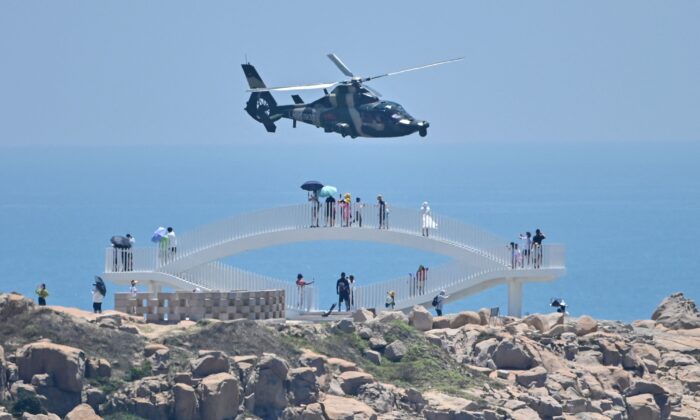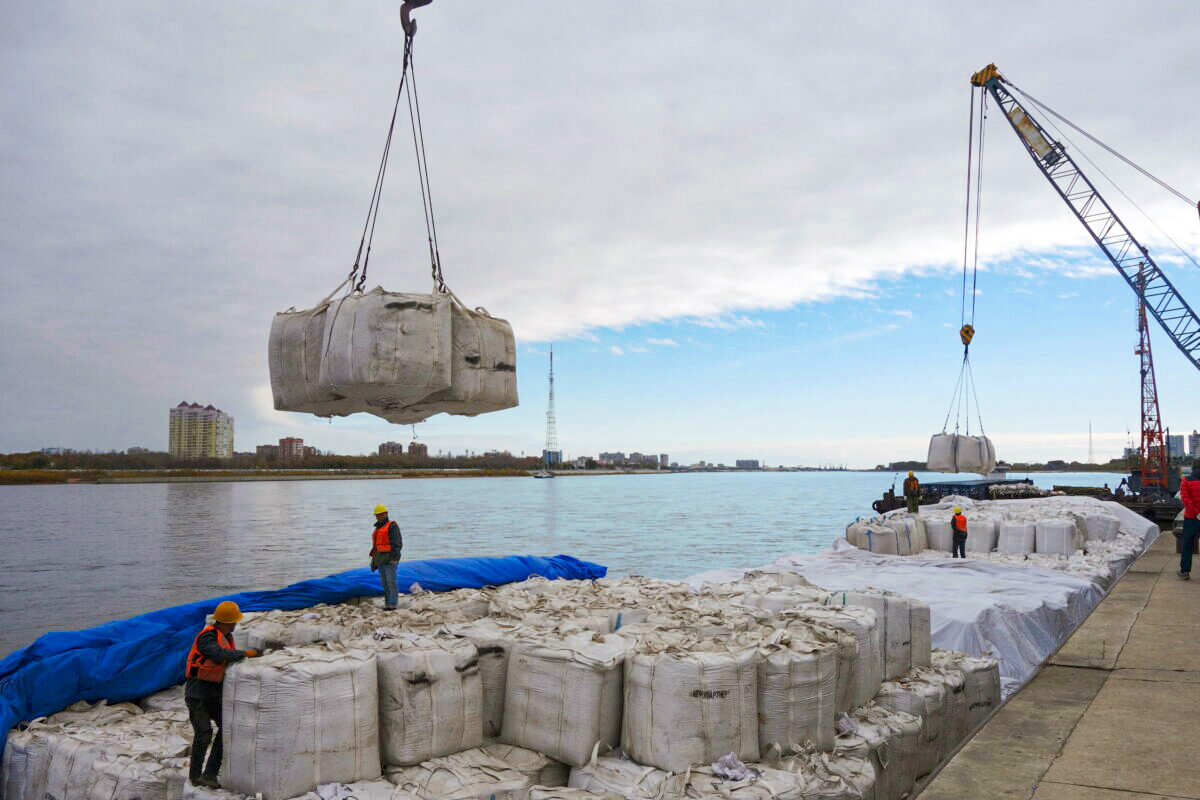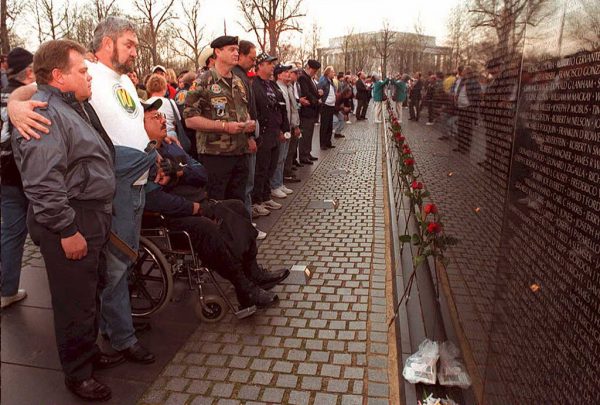
On Dec. 7, 2022, Edward Luttwak, a strategy consultant to the U.S. government, gave the keynote speech at Japan’s National Institute of Defense Studies (NIDS) International Symposium on Security Affairs. The speech was entitled “Can China Fight a War?”
Most media outlets didn’t cover the NIDS conference, and almost none of them mentioned Luttwak’s speech. News sources missed an opportunity to highlight some of China’s most important strategic weaknesses. These should be ferociously pursued if the Chinese Communist Party (CCP) orders the People’s Liberation Army (PLA) to conduct a military operation against Taiwan.
Can China Wage a War?
Luttwak noted at the beginning of his speech that he can’t answer the question: “Would the Chinese government actually initiate war operations; would it go to war against Taiwan?” He noted that leaders of countries (such as Russian President Vladimir Putin in the Ukraine or then-U.S. President George W. Bush in Iraq in 2003) “are quite capable of starting wars they cannot possibly win.”
“That is true of Russians and Americans, and it’s even more true of China,” he said.
Luttwak asked a simple question: “Can the People’s Republic of China as it now exists, actually wage a war … a small war … such as, for example, a war to take Taiwan?”
Using the metaphor of sustainability, he argued that the CCP would be in trouble if it fought a war against Taiwan today, especially if the war continued for more than several months. His analysis wasn’t based on standard military comparisons of the two countries’ military order of battle, weapon systems, or numbers of soldiers.
Instead, Luttwak focused on two key Chinese strategic weaknesses regarding sustainability: food supplies and dead soldiers.
Looking at Russia
Luttwak contrasted Russia and China. First of all, does Russia have a sustainable war?
According to Luttwak: “Russia does not import food. Russia may import some special pâté de foie gras from Paris, but the food the Russians make is the food they eat.”
Second, Russia doesn’t import energy; Russia exports energy.
Third, Russia has the most valuable commodity in wartime: Some families have extra sons.
The Importance of Food
In contrast, Luttwak noted that China annually imports several million tons of food. For example, in 2022, China imported more than 85 percent of its soybeans (95 million tons), mainly from the United States, Brazil, and Argentina.
China imports human food and animal feed, he said, including “95 million tons of soybeans, plus approximately 20–30,000 tons of maize, wheat, sorghum, millet, and these other things to feed to animals.” In addition to meat, “there are of course dairy imports, a lot of dairy imports.”
Consequently, according to Luttwak, “China is a protein-eating country, and the protein is important. Now, whatever else may happen, the moment a fight of any kind starts, even a small war, G-7 type sanctions start,” meaning that China will be cut off from imports such as soybeans from the United States and Canada.
 Workers stand near a crane unloading sacks of imported soybeans from Russia at Heihe port in Heilongjiang Province, China, on Oct. 10, 2018. (Stringer/Reuters)
Workers stand near a crane unloading sacks of imported soybeans from Russia at Heihe port in Heilongjiang Province, China, on Oct. 10, 2018. (Stringer/Reuters)He argued that once a war starts, “within about three months, they’ll have to kill … most of the pigs and the chicken, the mutton, the beef.”
Luttwak further claimed that during Mao’s rule over China, people survived because they ate more simply. They didn’t have much meat and certainly no yogurt.
“China used to be self-sufficient,” he said. “In other words, it used to be the way Russia is now for food. And now, it is completely different.”
Luttwak noted that Chinese leadership failed to ensure that China would continue expanding local sources of food. Despite recent laws preventing the conversion of agricultural land to housing or industry, China has continued to lose its agricultural land, primarily due to land erosion, industrialization, and urbanization.
However, he noted that Russia has been in a war since February 2022, and “still people in Russia … eat the same food they ate six months ago, a year ago.”
Energy
Some analysts might predict that China would be challenged to procure energy resources during wartime. However, although China imports a great deal of petroleum and liquified natural gas, Luttwak said, those imports “are not so important strategically as food is.”
He noted that “China has a large domestic production of petroleum and gas.” In wartime, he argued, China would be able to divert energy resources used for the export trade to support its population.
“And, in wartime, it is quite easy to ration some energy use,” Luttwak said.
Dead Soldiers: The Past Can Inform the Future
Luttwak noted that the very lowest estimate of Russians killed in Ukraine as of December 2022 was 25,000 (while many estimates put the number at well above 100,000). He said the Russians “can lose 25,000 soldiers in several months and it makes no difference. … Nobody is blocking the streets in Moscow in protest. It can continue like this for a long time.”
He then compared the USSR’s 1968 invasion of Czechoslovakia, Russia’s 2022 invasion of Ukraine, and the PLA’s possible invasion of Taiwan.
According to Luttwak, when the Soviet Union invaded Czechoslovakia in 1968, it was “able to put in 400,000 troops in the first 24 hours. And within 48 hours 800,000 troops.”
However, when Russia invaded Ukraine in 2022, it made the big mistake of only using 135,000 troops to invade a country that is 4 1/2 times larger than Czechoslovakia (603,700 square kilometers versus 127,900 square kilometers) and four times more populous. (In 1968, Czechoslovakia’s population was 10 million people; in 2022, Ukraine’s population was about 41 million people.) In Luttwak’s view, Russia should have planned to deploy four times the number of troops that the USSR sent into Czechoslovakia, or approximately 3.2 million.
Using similar population ratios, the PLA would need to deploy a minimum of 1.6 million soldiers within 48 hours of an invasion, since Taiwan’s population is about half of Ukraine’s population. The CCP would struggle with an inadequate number of ground forces, in the same way that Russia is struggling in Ukraine.
Post-Heroic Warfare
Luttwak said: “If you want to fight the war, you need to have a supply of expendable soldiers, sailors, airmen. … You cannot start the war if you’re not willing to tolerate casualties. Many years ago [1995], I published a theory called post-heroic warfare. … And my argument was terribly simple, really simple. The wars of history were fought by spare male children.”
According to his theory of post-heroic warfare, “the acceptance of casualties has gone down everywhere. Let’s say … [on] June 6, 1944, on Omaha beach, there was a mistake … 2,200 Americans died in one morning … but the war continued.”

Vietnam veterans gather at the Vietnam War Memorial in Washington to commemorate the 20th anniversary of the end of the Vietnam War, on April 8, 1995. (Joyce Naltchayan/AFP/Getty Images)
“[In] Vietnam, the United States lost 50,000 over 10 years … and that was considered very traumatic. … And, of course, since that time, society has changed further,” Luttwak said. “American families are smaller … so tolerance for casualties has gone down a lot. Now it doesn’t mean, of course, that if you go into a place like Iraq or Afghanistan and you lose a few thousand, that’s OK. But what you can’t do is to lose 10,000 dead before breakfast and continue normally. That is the post-heroic change.”
The following statistics for Afghanistan and Iraq support his argument. Almost 2,500 U.S. soldiers died in Afghanistan during the 20-year war (2001–20) and 4,400 U.S. soldiers died in Iraq during the seven-year war (2003–10). Additionally, more than 3,800 U.S. contractors were killed in Afghanistan and almost 3,600 in Iraq during the same respective time periods.
China’s Lack of Sons
Luttwak cited statistics in what he called “a post-heroic China.” In 1980, the CCP instituted its “one-child policy,” which lasted until 2016. Most Chinese families today have only one child. Although that’s supposed to change under new policies encouraging larger families, those policies won’t have an impact for decades.
In a model in which families are very small, “there are no spare male children, then families and society and the culture and the government all have to reduce casualties,” he said.
Luttwak told a story about the clash between Chinese and Indian troops in the Galwan River Valley of Ladakh in 2020. Approximately 20 Indian soldiers were killed, and shortly after the fighting, the dead were given military funerals, including a brigadier general.
The CCP, however, announced its killed-in-action eight months after the fighting. The CCP acknowledged four soldiers had been killed: one officer and three enlisted. What happened during those seven months is the interesting part of the story.
The PLA officer’s wife, a local music teacher, was promoted to a position as a music professor at a major conservatory.
The three enlisted soldiers were also each given special propaganda value. One soldier who looked very young was made into a local hero. Another PLA soldier was made into the “good guy” who was reported to have said, “I will give my life to defend the motherland—every inch of the motherland; I’m here to defend every inch.” Of course, Ladakh was never part of China—an inconvenient truth.
The CCP presented the third enlisted soldier as “very traditional.” In a letter that he supposedly wrote before he died, he said, “Dear Mom and Dad, I’m very sorry that I will not be there for you when you need me, but if there is an afterlife … then I hope to be there with you.” Luttwak noted the illogic of a reference to the afterlife by communist atheists.
In short, the Chinese “were concerned about the public reaction.”
This entire operation was to reduce the emotional impact of saying that four people died,” he said.
Intolerance for Casualties
Luttwak argued that if the CCP took eight months to work out the details for four soldiers, how will it deal with the death of several thousand, or perhaps several tens of thousands? He estimated that 25,000 to 40,000 PLA soldiers would die in the first week of a conflict with Taiwan. Many would die on ships or airplanes trying to land in Taiwan. These PLA casualties would be caused by Taiwan’s anti-ship systems and U.S. and allied submarines.
He concluded that although China would be unable to win a war in the near- to mid-term timeframe, it might, nonetheless, start such a war.
“I am not at all confident that the fact that China cannot fight a war means that they will not try to fight a war,” Luttwak said.
However, he predicted that “if China starts a war, it will have to stop quite quickly.”
No comments:
Post a Comment